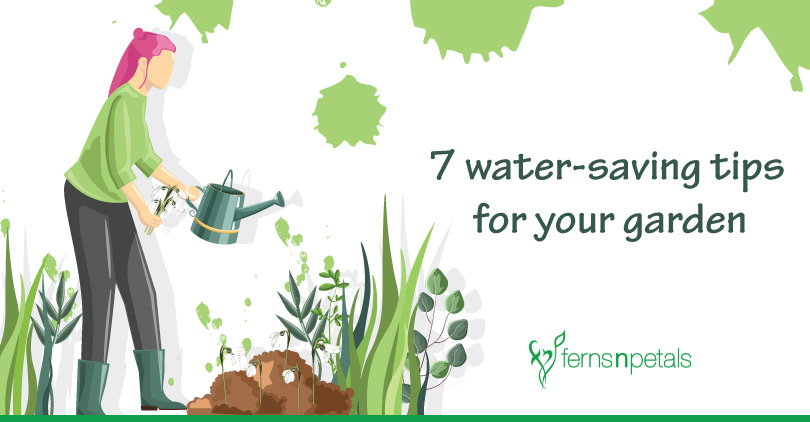Top Water-Saving Tips for Modern Gardens

In the heart of every gardener lies a deep connection to nature and a desire to nurture life. But what if we told you that you could create a lush, vibrant garden while also conserving one of our most precious resources—water? Imagine your garden as a well-oiled machine, where every drop of water is used efficiently, and waste is minimized. Welcome to the world of water-saving tips for modern gardens, where sustainability meets beauty. Let's dive in and explore how you can transform your garden into an eco-friendly oasis.
Understanding Garden Water Efficiency
Before we get into the nitty-gritty of water-saving tips, it's essential to understand what garden water efficiency means. Simply put, it's about using water wisely to ensure that your plants get what they need without wasting a single drop. Think of it like a well-planned budget—you allocate resources where they are most needed and cut back on unnecessary spending.
Why Water Efficiency Matters
Water is a finite resource, and with climate change and increasing droughts, it's more important than ever to use it responsibly. By adopting water-saving tips for modern gardens, you're not only helping the environment but also saving money on your water bill. It's a win-win situation!
Choosing Drought-Resistant Plants
One of the best ways to conserve water in your garden is by choosing drought-resistant plants. These hardy heroes can thrive with minimal water, making them perfect for eco-friendly garden practices.
The Beauty of Succulents and Cacti
Succulents and cacti are the superstars of drought-resistant plants. They store water in their leaves and stems, making them incredibly resilient. Plus, they come in a variety of shapes, sizes, and colors, adding a unique touch to your garden.
Native Plants: The Local Champions
Native plants are adapted to your local climate and soil conditions, making them naturally drought-resistant. They require less water and are more likely to thrive in your garden. For example, if you live in a dry region, consider plants like lavender, rosemary, or sage.
Smart Irrigation Techniques
Efficient irrigation is the backbone of water conservation strategies. It's about delivering the right amount of water to your plants at the right time.
Drip Irrigation: The Precision Tool
Drip irrigation systems deliver water directly to the roots of your plants, minimizing evaporation and runoff. It's like giving your plants a personalized watering schedule. According to the EPA, drip irrigation can save up to 50% more water than traditional sprinklers.
Rain Barrels: Harvesting Nature's Gift
Collecting rainwater in barrels is an excellent way to supplement your garden's water needs. It's free, and it reduces the demand on treated water supplies. Plus, rainwater is often better for plants because it's free of chemicals like chlorine.
Mulching: The Protective Layer
Mulching is one of the simplest yet most effective water conservation strategies. A layer of organic material, such as wood chips or straw, helps retain moisture in the soil, suppresses weeds, and regulates soil temperature.
The Benefits of Mulch
Mulch acts like a protective blanket for your soil. It slows down evaporation, keeping the soil moist for longer. This means you need to water less frequently, saving both water and time.
Eco-Friendly Garden Practices
Adopting eco-friendly garden practices goes beyond just saving water. It's about creating a sustainable ecosystem that benefits both your garden and the environment.
Composting: The Nutrient Boost
Composting is a fantastic way to recycle organic waste and enrich your soil. Healthy soil retains water better, reducing the need for frequent watering. Plus, it's a great way to reduce your carbon footprint.
Xeriscaping: The Art of Dry Gardening
Xeriscaping is a landscaping method that focuses on water conservation. It involves selecting drought-resistant plants, improving soil quality, and using efficient irrigation techniques. Think of it as the ultimate water-saving garden makeover.
Monitoring and Maintenance
Even the best water-saving tips for modern gardens require regular monitoring and maintenance to ensure they remain effective.
Regular Check-Ups
Just like a car needs regular servicing, your garden needs periodic check-ups. Inspect your irrigation system for leaks, ensure your mulch layer is intact, and keep an eye on your plants' health.
Adjusting for the Seasons
Different seasons have different watering needs. Adjust your irrigation schedule accordingly. For example, you'll need to water more frequently during hot, dry summers and less during cool, wet winters.
Conclusion
Creating a water-efficient garden is not just about saving water; it's about creating a sustainable and beautiful space that you can enjoy for years to come. By choosing drought-resistant plants, adopting smart irrigation techniques, and practicing eco-friendly garden maintenance, you can transform your garden into a water-saving haven. So, are you ready to take the first step towards a more sustainable garden? Let's make every drop count!

FAQs
What are the best drought-resistant plants for a dry climate?
For dry climates, consider plants like lavender, rosemary, sage, and succulents. These plants are well-adapted to arid conditions and require minimal watering.
How does drip irrigation save water?
Drip irrigation delivers water directly to the roots of plants, reducing evaporation and runoff. This targeted watering method ensures that plants get the water they need without wasting any.
What is xeriscaping, and how does it help with water conservation?
Xeriscaping is a landscaping method that focuses on water conservation. It involves selecting drought-resistant plants, improving soil quality, and using efficient irrigation techniques to create a low-water garden.
How can mulching benefit my garden?
Mulching helps retain moisture in the soil, suppresses weeds, and regulates soil temperature. This means you need to water less frequently, saving both water and time.
What are some simple ways to monitor my garden's water efficiency?
Regularly inspect your irrigation system for leaks, ensure your mulch layer is intact, and keep an eye on your plants' health. Adjust your watering schedule based on the seasons and weather conditions.
0 Response to "Top Water-Saving Tips for Modern Gardens"
Post a Comment